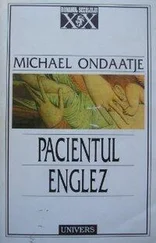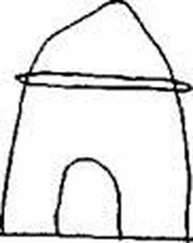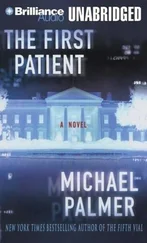Michael Ondaatje - The English Patient
Здесь есть возможность читать онлайн «Michael Ondaatje - The English Patient» весь текст электронной книги совершенно бесплатно (целиком полную версию без сокращений). В некоторых случаях можно слушать аудио, скачать через торрент в формате fb2 и присутствует краткое содержание. Жанр: Старинная литература, на русском языке. Описание произведения, (предисловие) а так же отзывы посетителей доступны на портале библиотеки ЛибКат.
- Название:The English Patient
- Автор:
- Жанр:
- Год:неизвестен
- ISBN:нет данных
- Рейтинг книги:4 / 5. Голосов: 1
-
Избранное:Добавить в избранное
- Отзывы:
-
Ваша оценка:
- 80
- 1
- 2
- 3
- 4
- 5
The English Patient: краткое содержание, описание и аннотация
Предлагаем к чтению аннотацию, описание, краткое содержание или предисловие (зависит от того, что написал сам автор книги «The English Patient»). Если вы не нашли необходимую информацию о книге — напишите в комментариях, мы постараемся отыскать её.
The English Patient — читать онлайн бесплатно полную книгу (весь текст) целиком
Ниже представлен текст книги, разбитый по страницам. Система сохранения места последней прочитанной страницы, позволяет с удобством читать онлайн бесплатно книгу «The English Patient», без необходимости каждый раз заново искать на чём Вы остановились. Поставьте закладку, и сможете в любой момент перейти на страницу, на которой закончили чтение.
Интервал:
Закладка:
They had flown the sappers into Naples at the beginning of October 1943, selecting the best from the engineering corps that were already in southern Italy, Kip among the thirty men who were brought into the booby-trapped city.
The Germans in the Italian campaign had choreographed one of the most brilliant and terrible retreats in history. The advance of the Allies, which should have taken a month, took a year. There was fire in their path. Sappers rode the mudguards of trucks as the armies moved forward, their eyes searching for fresh soil disturbances that signalled land mines or glass mines or shoe mines. The advance impossibly slow. Farther north in the mountains, partisan bands of Garibaldi communist groups, who wore identifying red handkerchiefs, were also wiring explosives over the roads which detonated when German trucks passed over them.
The scale of the laying of mines in Italy and in North Africa cannot be imagined. At the Kismaayo-Afmadu road junction, 260 mines were found. There were 300 at the Omo River Bridge area. On June 30, 1941, South African sappers laid 2,700 Mark 11 mines in Mersa Matruh in one day. Four months later the British cleared Mersa Matruh of 7,806 mines and placed them elsewhere.
Mines were made out of everything. Forty-centimetre galvanized pipes were filled with explosives and left along military paths. Mines in wooden boxes were left in homes. Pipe mines were filled with gelignite, metal scraps and nails. South African sappers packed iron and gelignite into four-gallon petrol cans that could then destroy armoured cars.
It was worst in the cities. Bomb disposal units, barely trained, were shipped out from Cairo and Alexandria. The Eighteenth Division became famous. During three weeks in October 1941, they dismantled 1,403 high-explosive bombs.
Italy was worse than Africa, the clockwork fuzes nightmarishly eccentric, the spring-activated mechanisms different from the German ones that units had been trained in. As sappers entered cities they walked along avenues where corpses were strung from trees or the balconies of buildings. The Germans often retaliated by killing ten Italians for every German killed. Some of the hanging corpses were mined and had to be blown up in midair.
The Germans evacuated Naples on October 1, 1943. During an Allied raid the previous September, hundreds of citizens had walked away and begun living in the caves outside the city. The Germans in their retreat bombed the entrance to the caves, forcing the citizens to stay underground. A typhus epidemic broke out. In the harbour scuttled ships were freshly mined underwater.
The thirty sappers walked into a city of booby traps. There were delayed-action bombs sealed into the walls of public buildings. Nearly every vehicle was rigged. The sappers became permanently suspicious of any object placed casually in a room. They distrusted everything they saw on a table unless it was placed facing “four o’clock.” Years after the war a sapper putting a pen on a table would position it with the thicker end facing four o’clock.
Naples continued as a war zone for six weeks and Kip was there with the unit for the whole period. After two weeks they discovered the citizens in the caves. Their skin dark with shit and typhus. The procession of them back into the city hospitals was one of ghosts.
Four days later the central post office blew up, and seventy-two were killed or wounded. The richest collection of mediaeval records in Europe had already burned in the city archives.
On the twentieth of October, three days before electricity was to be restored, a German turned himself in. He told authorities that there were thousands of bombs hidden in the harbour section of the city that were wired to the dormant electrical system. When power was turned on, the city would dissolve in flames. He was interrogated more than seven times, in differing stages of tact and violence—at the end of which the authorities were still uncertain about his confession. This time an entire area of the city was evacuated. Children and the old, those almost dead, those pregnant, those who had been brought out of the caves, animals, valuable jeeps, wounded soldiers out of the hospitals, mental patients, priests and monks and nuns out of the abbeys. By dusk on the evening of October 22, 1943, only twelve sappers remained behind.
The electricity was to be turned on at three p.m. the next day. None of the sappers had ever been in an empty city before, and these were to be the strangest and most disturbing hours of their lives.
During the evenings thunderstorms roll over Tuscany. Lightning drops towards any metal or spire that rises up out of the landscape. Kip always returns to the villa along the yellow path between the cypresses around seven in the evening, which is when the thunder, if there is going to be thunder, begins. The mediaeval experience.
He seems to like such temporal habits. She or Caravaggio will see his figure in the distance, pausing in his walk home to look back towards the valley to see how far away the rain is from him. Hana and Caravaggio return to the house. Kip continues his half-mile uphill walk on the path that curls slowly to the right and then slowly to the left. There is the noise of his boots on the gravel. The wind reaches him in bursts, hitting the cypresses broadside so they tilt, entering the sleeves of his shirt.
For the next ten minutes he walks, never sure if the rain will overtake him. He will hear the rain before he feels it, a clicking on the dry grass, on the olive leaves. But for now he is in the great refreshing wind of the hill, in the foreground of the storm.
If the rain reaches him before he gets to the villa, he continues walking at the same pace, snaps the rubber cape over his haversack and walks on within it.
In his tent he hears the pure thunder. Sharp cracks of it overhead, a coach-wheel sound as it disappears into the mountains. A sudden sunlight of lightning through the tent wall, always, it seems to him, brighter than sunlight, a flash of contained phosphorus, something machinelike, to do with the new word he has heard in the theory rooms and through his crystal set, which is “nuclear.” In the tent he unwinds the wet turban, dries his hair and weaves another around his head.
The storm rolls out of Piedmont to the south and to the east. Lightning falls upon the steeples of the small alpine chapels whose tableaux reenact the Stations of the Cross or the Mysteries of the Rosary. In the small towns of Varese and Varallo, larger-than-life terra-cotta figures carved in the 1600s are revealed briefly, depicting biblical scenes. The bound arms of the scourged Christ pulled back, the whip coming down, the baying dog, three soldiers in the next chapel tableau raising the crucifix higher towards the painted clouds.
The Villa San Girolamo, located where it is, also receives such moments of light—the dark halls, the room the Englishman lies in, the kitchen where Hana is laying a fire, the shelled chapel—all lit suddenly, without shadow. Kip will walk with no qualms under the trees in his patch of garden during such storms, the dangers of being killed by lightning pathetically minimal compared with the danger of his daily life. The naive Catholic images from those hillside shrines that he has seen are with him in the half-darkness, as he counts the seconds between lightning and thunder. Perhaps this villa is a similar tableau, the four of them in private movement, momentarily lit up, flung ironically against this war.
The twelve sappers who remained behind in Naples fanned out into the city. All through the night they have broken into sealed tunnels, descended into sewers, looking for fuze lines that might be linked with the central generators. They are to drive away at two p.m., an hour before the electricity is to be turned on.
Читать дальшеИнтервал:
Закладка:
Похожие книги на «The English Patient»
Представляем Вашему вниманию похожие книги на «The English Patient» списком для выбора. Мы отобрали схожую по названию и смыслу литературу в надежде предоставить читателям больше вариантов отыскать новые, интересные, ещё непрочитанные произведения.
Обсуждение, отзывы о книге «The English Patient» и просто собственные мнения читателей. Оставьте ваши комментарии, напишите, что Вы думаете о произведении, его смысле или главных героях. Укажите что конкретно понравилось, а что нет, и почему Вы так считаете.












